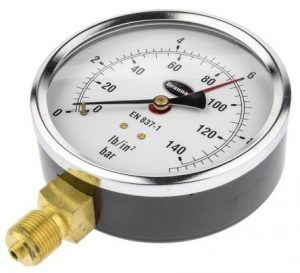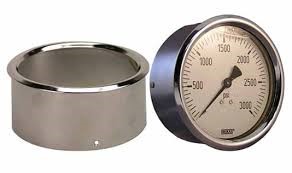Pressure gauge – what is a bezel?
A bezel is the front outside ring of the pressure gauge and is used to connect the window to the case. There are several types of bezel available:
1. Bayonet ring
2. Crimp ring
3. Profile ring
4. Standoff ring
5. Friction ring
Bayonet ring
A bayonet ring is a removable ring on a pressure gauge. Most bayonet rings have several indentations on the outside of the ring to easily remove it from the gauge – but not always – as some are loose enough that they can be taken off just by pulling with your hand. As this type of bezel holds the window onto the case, removing it will give the user access to the dial face, making it most suited for use on a pressure gauge that has an adjustable or loose pointer.

Crimp ring
A crimp ring is a bezel that has been crimped onto the pressure gauge. Specialist tools are used to do this and cannot be removed, which hinders any tampering with the pressure gauge.


Profile ring
A profile ring is mainly used on gauges that can be panel mounted with certain types of mounting brackets. This type of ring is also known as a seal ring. Once mounted this creates a mechanical seal between the gauge and the mount to prevent leakage. There are different kinds of profile rings such as twist on bayonet profile ring, screw retained profile ring and a crimped profile ring. What all these types of profile rings have in common is a protrusion, or a lip which allows for the gauge to be mounted.

Standoff ring
Like the profile ring, a standoff ring is also used in panel mounting and is mainly used with pressure gauges that have a bayonet bezel. The standoff ring creates an offset between the panel and the bayonet bezel. When mounted the standoff ring will be flush against the panel and the bayonet bezel can then be removed freely, whilst letting the pressure gauge stay in place. This is useful when adjusting the loose red pointer on the pressure gauge when connected to the system.

Friction ring
A friction ring is retained by friction and small indented tabs on the case. These are usually used for gauges with a glass window as it holds the glass window in place.

